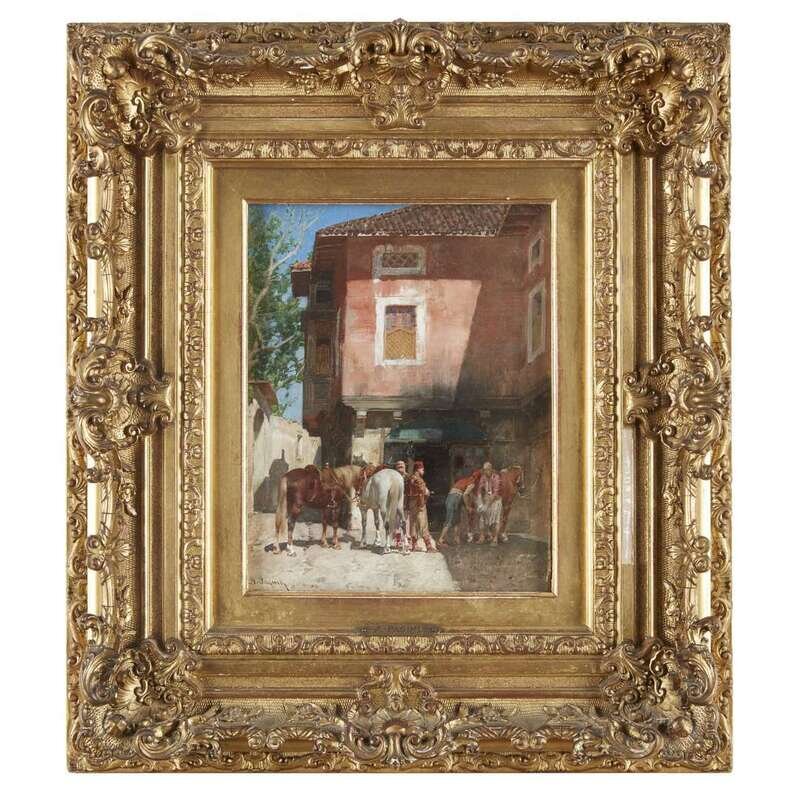Lot 14
Provenance: Private Collection, Pennsylvania.
NOTE:
Although trained at the Academy of Fine Arts in Parma, Italian-born artist Alberto Pasini moved to Paris in 1851 to refine his technique. There, he befriended other artists including Eugéne Fromentin (1820-1876), Jules Dupré (1811-1889) and Théodore Rousseau (1812-1867), all of whom contributed to the development of his palette and plein-air philosophy.
In 1853, the artist was admitted to the Paris Salon, which enabled him to join the workshop of the famous painter Théodore Chassériau (1819-1856), who introduced him to Orientalism. When Chassériau was too ill to accompany Ambassador Nicolas Prosper Bourée (1811-1886) on a diplomatic mission to Persia in February 1855, Pasini replaced him, thus embarking on the first of many journeys to the East, including memorable stops in Turkey and Egypt.
Back in Paris, his artistic qualities were quickly acknowledged. His dazzling depictions of bazaars, market places and mosques made him a fortune, and he earned several honors such as the Légion d'Honneur in 1878. Of Pasini, critic Virgilio Colombo said: "[He] faithfully reproduces the architectural accessories, which sparkle in the sun and bathe in the blue shadows: in this, he is unrivaled and shows extraordinary ingenuity to create huge painting in small canvases. What skill in painting (...) thoughtful knights, with sumptuous trappings, damask-decorated weapons, kiosks, market and military camps, the intimate recesses of the harem, the profiles of city with jagged spires and minarets (...) The oriental scenes are exquisitely treated."
Featured in the present lot are four gentlemen caring for their horses at the blacksmith's shop. On a very small, almost miniature scale, the artist is able to capture the subtle effects of light on the stonework of the surrounding buildings, the rich textures of the costumes of the figures, as well as the musculature of the horses who patiently wait in the courtyard. The light pinks, blues and greens, and the contrast between the sunlit facade and the strongly shaded foreground are all hallmarks of the artist's oeuvre. Also typical is his habit of placing small figures within a closed composition, where an imposing architecture serves as a backdrop for the scene, thus reducing the horizon line and filling the picture plane with decorative and picturesque details. The only sense of depth truly results from the foreshortened horses and the dramatic shadows on the ground, creating an intimate space where the spectator is invited to gaze with awe. Although the exact setting is not known, the ornaments on the building recall the decorative facades which Pasini witnessed during his many trips to Constantinople (modern Istanbul).





